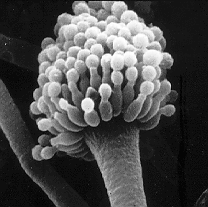
The Eurotiales are an order of sac fungi, also known as the green and blue molds. It was circumscribed in 1980.

The Leotiomycetes are a class of ascomycete fungi. Many of them cause serious plant diseases.
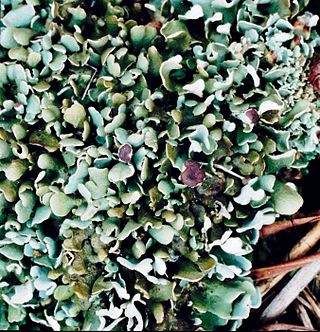
Lecanoromycetes is the largest class of lichenized fungi. It belongs to the subphylum Pezizomycotina in the phylum Ascomycota. The asci of the Lecanoromycetes most often release spores by rostrate dehiscence.

The Xylariales are an order of fungi within the class Sordariomycetes, subdivision Pezizomycotina, division Ascomycota. It was the original order of the subclass Xylariomycetidae. Xylariales was circumscribed in 1932 by Swedish mycologist John Axel Nannfeldt, and Xylariomycetidae by Ove Erik Eriksson and Katarina Winka in 1997. In 2020, more families were added to the order.
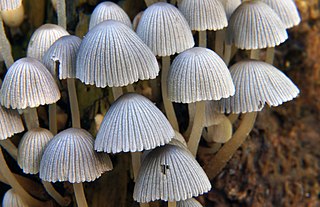
Agaricomycotina is one of three subdivisions of the Basidiomycota, and represents all of the fungi which form macroscopic fruiting bodies. Agaricomycotina contains over 30,000 species, divided into three classes: Tremellomycetes, Dacrymycetes, and Agaricomycetes. Around 98% of the species are in the class Agaricomycetes, including all the agarics, bracket fungi, clavarioid fungi, corticioid fungi, and gasteroid fungi. Tremellomycetes contains many basidiomycete yeasts and some conspicuous jelly fungi. Dacrymycetes contains a further group of jelly fungi. These taxa are founded on molecular research, based on cladistic analysis of DNA sequences, and supersede earlier morphology-based classifications. Agaricomycotina contains nearly one third of all described species of fungi.

Hypocreomycetidae is a subclass of sac fungi.
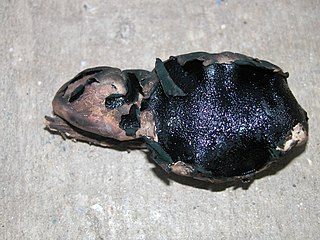
Sordariomycetidae is a subclass of sac fungi.

Diaporthales is an order of sac fungi.

Phyllachorales is a small order of perithecial sac fungi containing mostly foliar parasites. This order lacks reliable morphological characters making taxonomic placement of genera difficult. There is controversy among mycologists as to the boundaries of this order. Family Phaeochorellaceae was added in 2020.

Arthoniomycetes are a class of ascomycete fungi. It includes two orders: Arthoniales and Lichenostigmatales. Most of the taxa in these orders are tropical and subtropical lichens.
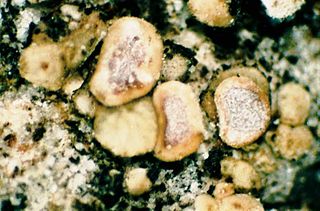
The Acarosporales are an order of fungi in the class Lecanoromycetes. Phylogenetic analyses conducted using the sequences of both the protein-coding gene RPB2 as well as nuclear ribosomal genes place this order within the subclass Acarosporomycetidae.

The Lecanoromycetidae are a subclass of fungi in the class Lecanoromycetes. This subclass contains five orders: the Caliciales Bessey, the Lecanorales Nannf., the Lecideales Vain, the Leprocaulales Lendemer & B.P. Hodk., the Peltigerales W. Watson, the Rhizocarpales Miądl. & Lutzoni ex Miądl. & Lutzoni ex Miadl. & Lutzoni, and the Teloschistales D. Hawksw. & O.E. Erikss.
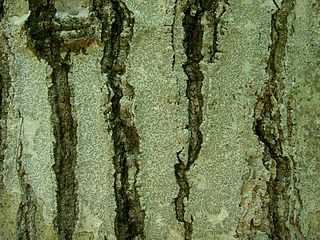
The Ostropomycetidae are a subclass of mostly lichen-forming fungi in the class Lecanoromycetes. The subclass was circumscribed in 2004 by Catherine Reeb, François M. Lutzoni, and Claude Roux. It contains ten orders and 36 families.

The Pertusariales are an order of fungi in the class Lecanoromycetes. It contains the following families: Coccotremataceae, Icmadophilaceae, Megasporaceae, Microcaliciaceae, Ochrolechiaceae, Pertusariaceae, Varicellariaceae, and Variolariaceae. Many of these fungi form lichens.

The Microascales are an order of fungi in the class Sordariomycetes, subclass Hypocreomycetidae. This is a relatively small order of mostly saprobic fungi that live in soil, rotting vegetation and dung. Some species are plant pathogens, such as Ceratocystis fimbriata, transmitted by beetles to living trees and causing cacao wilt and many other economically important diseases. Species in the genus Pseudallescheria are pathogenic to humans The order was circumscribed in 1980. Wijayawardene et al. in 2020 added more families and genera to the order.

The Candelariales are an order of fungi in the monotypic class Candelariomycetes. It contains the families Candelariaceae and Pycnoraceae. The order was circumscribed by Jolanta Miadlikowska, François Lutzoni, and Helge Thorsten Lumbsch as part of a comprehensive phylogenetic classification of the kingdom Fungi published in 2007. The class Candelariomycetes was created in 2018 by Hermann Voglmayr and Walter Jaklitsch.
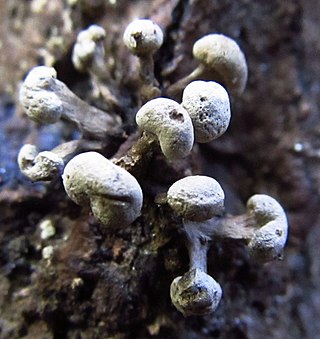
The Atractiellomycetes are class of fungi in the Pucciniomycotina subdivision of the Basidiomycota. The class consists of a single order, the Atractiellales, which contains 3 families, 10 genera, and 58 species.
The Cystobasidiomycetes are class of fungi in the subdivision Pucciniomycotina of the Basidiomycota. The class contains six orders: Buckleyzymales, Cyphobasidiales, Cystobasidiales, Erythrobasidiales, Naohideales, and Sakaguchiales.

The Magnaporthales are an order of fungi within the class Sordariomycetes.
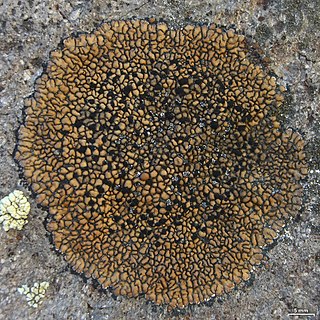
The Lecideales are an order of lichenized fungi in the class Lecanoromycetes. The order contains two families: the Lecideaceae, which contains 29 genera and about 260 species, and Lopadiaceae, which contains the single genus Lopadium of 10 species.



















